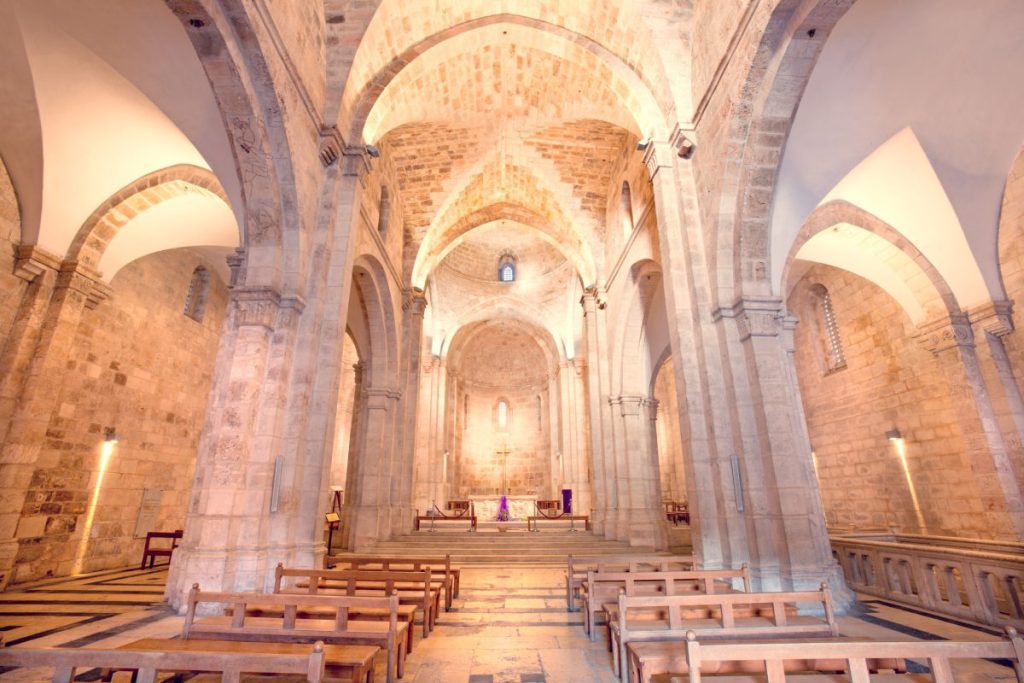The Church of Saint Anne in Jerusalem marks, according to Christian tradition, is the birthplace of Mary the Mother of Jesus. In fact, St. Anne after whom the church is named is Hannah (Anna) the wife of Jehoiachin, the mother of Marry. Also, the church is located near the Lions’ Gate, in the Muslim Quarter, along the route of Via Dolorosa. And belongs to the Order of the French Monks “the White Fathers” (for no color in their robes). In addition, in the courtyard of the church are archeological remains identified with the pools of Bethesda. According to tradition, the miracle of the healing at the Pool took place near here; in which Jesus commanded an invalid person to enter the water and thus he was healed (John 5).

The History of the Church of Saint Anne
So the Church of Saint Anne in Jerusalem is a French Roman Catholic church and French national domain located at before the start of the Via Dolorosa. Just between the Lions’ Gate and of the Second Station of the Cross (the churches of the Flagellation and Condemnation); in the Muslim Quarter of the Old City of Jerusalem. During the Roman period a pagan shrine for the cult of the god of healing (a syncretic mix between the Egyptian god Serapis and the Greek god Asclepius); stood on the grounds next to the two Pools of Bethesda.
Furthermore, a Byzantine basilica was built over the remains of the shrine in the 5th century. Partially destroyed by the Persians in 614, it was subsequently restored. Baldwin I, the first titled Crusader king of Jerusalem; banished his wife Arda to the old Benedictine convent which still existed here in 1104. A small Crusader church, the so-called Moustier, was then erected over the wall separating the northern and southern Pools of Bethesda, among the ruins of the Byzantine church.
Tomb of the Virgin Mary

The Actual Church of Saint Anne in Jerusalem
So the actual Church of St Anne was built sometime between 1131 and 1138, during the reign of Queen Melisende. It was erected near the remains of the Byzantine basilica, over the site of a grotto believed by the Crusaders to be the childhood home of the Virgin Mary, mother of Jesus. It is dedicated to Anne and Joachim, the parents of Saint Mary, who according to tradition lived here. Unlike many other Crusader churches, St. Anne’s was not destroyed after the 1187 conquest of Jerusalem by Saladin In 1192. In fact, he converted the building into a madrasa (Islamic educational institution). Furthermore, it is still written in the Arabic inscription above the entrance.

Design and Construction
Built between 1131 and 1138 to replace a previous Byzantine church, and shortly thereafter enlarged by several meters, the church is an excellent example of Romanesque architecture. The three-aisled basilica incorporates cross-vaulted ceilings and pillars, clear clean lines, and a somewhat unadorned interior. The nave is separated from the lower lateral aisles by arcades of arches.

The high altar, designed by the French sculptor Philippe Kaeppelin incorporates many different scenes. On the front of the altar are depicted the Nativity (left), the Descent from the Cross (center), and the Annunciation (right); on the left-hand end is the teaching of Mary by her mother, on the right-hand end her presentation in the Temple. In the south aisle is a flight of steps leading down to the crypt, in a grotto believed by the Crusaders to be Mary’s birthplace. An altar dedicated to Mary is located there.